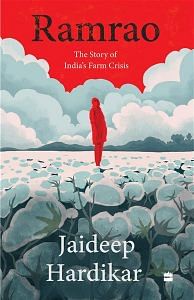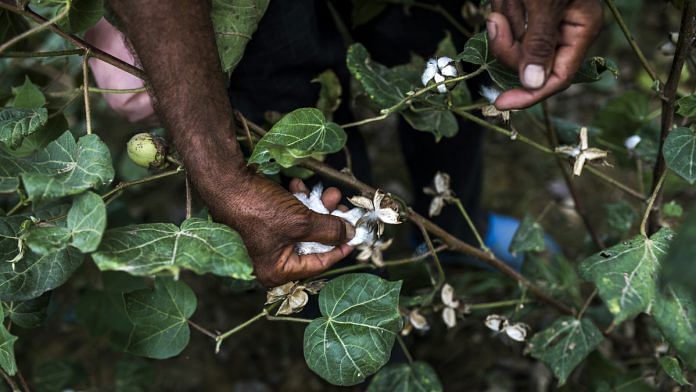Ramrao and I are chatting on a languid day in May 2015. Since first meeting him in April the previous year soon after his suicide attempt, we have had regular phone conversations and I have been to his home on several occasions.
Every time, he has looked and sounded depressed.
Health problems can have debilitating effects, not only on the patient but the entire household. And if you happen to be a farmer, healthcare costs can tear your family apart. Farmers in Vidarbha have had to sell or mortgage their lands to foot spiralling medical bills. Even a viral fever epidemic could leave a village in tatters, as I saw during the chikungunya sweep of 2005, when several people died in the countryside all over Vidarbha. The more fatal the illness, the more severe the distress. Several national and local studies have termed health exigencies and private healthcare spending as a contributing factor in aggravating the agrarian crisis. This drew a policy response from the central government when the Manmohan Singh-led UPA rationalized rural health programmes to launch the National Rural Health Mission (NRHM) to improve the rural health apparatus and cut skyrocketing healthcare costs. But it was not enough. And of late, in stark contrast to the concept of universal healthcare, the BJP governments at the Centre and state have pushed for private, insurance-driven healthcare.
Vimalbai, his wife, suffered from multiple illnesses. She inherited chronic asthma and later developed kidney complications that ultimately proved fatal. For years, Ramrao spent huge sums on her hospital stays and medicines, looked after her at home and brought up their two daughters but could not, as he laments, give them higher education. A large part of his borrowings was to pay the fat healthcare bills incurred at private hospitals in Yavatmal.
‘If she were healthier, we would have been better off,’ he once rued.
From 2000 to 2006, when Vidarbha’s farmer suicides multiplied, Ramrao remembers his financial status being that of an average farmer’s. The 2008–10 period even brought him good luck. Those were the best years for his farm and of his life.
‘In 2008, my loans got waived off,’ he vividly recalls.
That year, then Union Finance Minister P. Chidambaram announced a much-anticipated total loan waiver scheme in the Union budget, just a year before the UPA went into the 2009 Lok Sabha elections. The alliance comfortably returned to power, riding on the goodwill it had generated among the nation’s peasantry with the waiver of outstanding bank loans and other important interventions to augment rural incomes. In fact, that decision had been prompted by vitriolic farm protests in Vidarbha and other parts of India.
In 2006, Prime Minister Manmohan Singh had toured Vidarbha and a few other regions that reported a high incidence of farmer suicides to draw up a strategy to mitigate the crisis. He was unequivocal in admitting that rural India was in a deep, deep crisis and farmers’ suicides were a national shame. His visits yielded a series of policy steps for about three dozen districts spanning five states, including Maharashtra, with six of the districts in Vidarbha. There was a generous raise in the support prices of agricultural commodities, including cotton—the prices that year went up from ₹1,980 to ₹3,000 a quintal—and a total loan waiver, apart from money being pumped to augment irrigation projects in dry-land Vidarbha.
Also read: Indian farmers need a new distress index. Just suicide data won’t do
However, the Centre resorted to quick-fix schemes and programmes rather than providing a long-term plan for the rural peasantry. It undertook the guarantee of repayment of the outstanding loans of farmers as the Reserve Bank of India (RBI) asked nationalized and cooperative banks to erase all outstanding farm loans from their ledgers and make the indebted peasants creditworthy once again.
Ramrao had some ₹50,000 to ₹60,000 worth of outstanding loans waived off, got fresh loans at lower interest rates, and sold his cotton at a rate he had never earned in his entire life as a farmer.
With good monsoon backing and the slew of farmer-friendly policies, 2009 looked rosy. And buoyed by that year’s success and his drive, Ramrao and his farm were on song the following year—2010 is etched in his memory as though the year was the pinnacle of his hard work and love for farming.
‘I took every single farmland around me on lease.’ Cumulatively, he calculates, about 150 acres.
Momentarily, Ramrao looks happy as he travels down memory lane, looking as if he would want to live every day of 2010 again. With optimism that he hadn’t allowed himself ever, Ramrao aggregated small lands in 2010 and paid a lot of money as rent. The future of his two daughters, who would soon be of marriageable age, was on his mind and he knew he would need money.
The catch was that the banks lent money only for the land in your name. For the leased or rented lands, Ramrao had to borrow money from private lenders at higher interest rates.
Farming is non-remunerative, he insists with a significant look, his tone that of a tired man. Farmers, particularly the dry-land ones, have actually been losing money in whatever they cultivate and harvest, their debts have grown, their agricultural income is in constant decline.
‘I hired twenty labourers that year to work round the clock. I paid ₹6,00,000–₹7,00,000 in wages alone. That year, I never left the farm. Vimal and I would come to the farm early and go home late. Alakya and Anuja would be home all day managing the domestic chores. Vimal took care of the women labourers and I would go from one farm to another, overseeing operations. All my farmhands too worked very hard.’
Ramrao reaped a bumper harvest and matching returns. That year, cotton, soybean and tur prices had risen high, riding on an impetus and bullish national and global demand. China was importing cotton, Europe needed the soya de-oiled cakes for its dairy, and tur was rallying because India had imported less amounts of it that year and domestic production was good enough to meet local consumption.
Also read: 35 years ago on this day, first farmer family suicide was recorded in Maharashtra
As 2011 dawned, Ramrao was flush with cash. Out of nowhere, Alakya received a wedding proposal. She wasn’t even seventeen yet but Ramrao and Vimalbai decided to accept it. Vimalbai was ailing, she did not think she would live long enough to see her daughters’ weddings. Bending to her mother’s wishes, Alakya agreed to tie the knot while she was still officially a minor.
In May 2011, she got married to Rahul Ranganeniwar, ten years older than her and known within family circles in Telangana.
‘When she left, my problems started,’ he says.
In early 2012, Vimalbai fell seriously sick and passed away. ‘That year, I was farming 65 acres. Vimal died in June, and I suffered big losses later that year. I had spent a lot of money settling hospital bills and most of it was borrowed.’
In 2013, Ramrao adds, Anuja married the eldest of the Bolenwar siblings. Munna’s elder brother came asking her hand in marriage for his son, Suraj. They did not want any dowry, so he agreed. For the wedding he borrowed more from his aunt and other lenders, including his brother.
With Anuja and Alakya married and his wife no more, Ramrao suddenly found himself all alone.
‘I had spent all I had and borrowed even more. I was neck-deep in debt but I was sure I was going to be able to repay it.’
Then, in early 2014, extreme hail and rain partially wrecked his green gram crop sown on 45 acres of land in the winter sowing, after cotton and soybeans had come a cropper earlier in the monsoon of 2013. Ramrao’s losses burgeoned.
Also read: No title, no money — Women grow 80% of India’s food, but new farm laws unlikely to help them
‘Loans, losses, loneliness,’ he says in an indignant tone, ‘had a terrible impact on me. They brought back all the terrible memories of my childhood struggles, the crushing poverty.’ It made him wonder if his life was even worth living. And deep down in his being, the idea of taking his own life was sown.
For a quintal of his cotton, Ramrao gets between ₹5,000 and ₹6,000, but the traders and ginners who buy it make at least three times more after the initial processing. As it passes through the value chain, the raw cotton appreciates at least twenty-four times in value. The primary producers like Ramrao are the only ones who suffer losses, while all other players in the chain make a killing. He puts in a lot of sweat, money and water and yet, every year, ends up a loser.
 This excerpt from ‘Ramrao: A Story Of India’s Farm Crisis’ by Jaideep Hardikar has been published with permission from HarperCollins India.
This excerpt from ‘Ramrao: A Story Of India’s Farm Crisis’ by Jaideep Hardikar has been published with permission from HarperCollins India.



